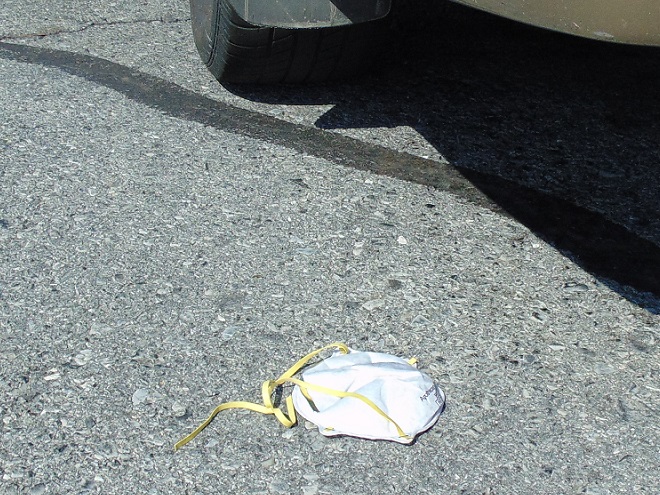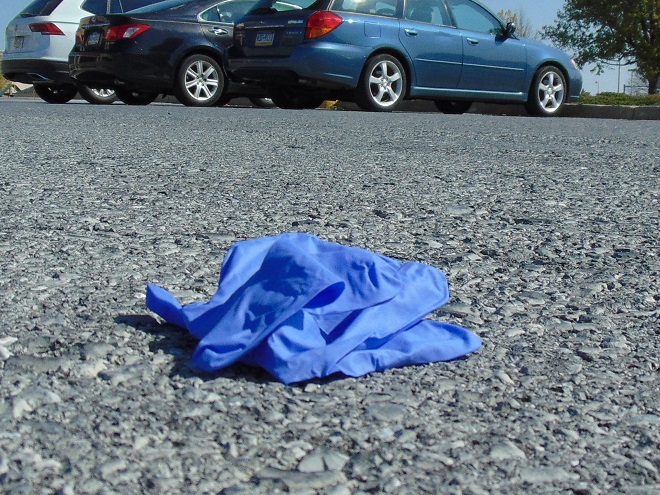It’s interesting to watch germophobes—and now coronaphobes—in action.
Some germophobes are very sanitary. They’ve practiced aseptic measures for most of their lives and have learned how clean and disinfect themselves and their surroundings quite well. Good for them.
Then there are those germophobes who are really bad at it. They’ve had years and years of practice, but they still can’t get it right. The public restroom is their absolute worst terror. They’ll empty the soap and sanitizer bottles into the mounds of paper towels they’ve stripped from the dispensers on the wall. Then they’ll wipe and scrub the privacy walls, flushable fixture, counter top, and sink they intend to use. (They don’t seem to bother with cleaning the mirrors though; I guess they’re too busy.) The puddles of dripped water leave a trail from the sink to their chosen stall of comfort. Then more paper towels are hauled off to try to dry the sloppy mess they’ve made. Then comes the clincher—not daring to get near a dirty trash can, they flush the giant wad of paper down the toilet and clog it. In frustration, they flush again and again until finally, they flood the entire restroom with sewer water. Then they panic and scurry away without ever finishing the business they started, if you know what I mean. How does your editor know these things? Well, for several years your friendly editor was a repairman in a series of very busy travel terminals, and it was he who got the call to undo the damage. It was an absolute nightmare, and it happened almost every day.
Now that we’re under don’t-call-it-martial-law-martial-law and compliant types are wearing masks while they work or cure their uncontrollable cravings to shop, it’s getting difficult to separate the germophobes from all these coronaphobes and other mask newbies.
I suspect that the handful of people I see in public using a mask as it was designed and then disposing of it properly upon removal have had some sort of medical or laboratory experience sometime in their lives—or they’re one of the skilled master germophobes. Good for them.
The real challenge comes when trying to separate the bumbling germophobe from the new recruits—the sloppy coronaphobes and the not-so-inspired mask-wearers who have been coerced into donning a rag so that they can work or get food. They all share a set of common practices that make telling them apart impossible. First, they’re fussing with the mask. They’ve got their hands on it. They’re pulling it up. Then they’re pulling it down, moving it to their left, then to their right. Crud on their hands gets on the mask, and the creepy crawlies from the mask get on their hands. Mask to hands to everything they touch. It’s almost the equivalent of having their hands in their mouth before pulling them out to grab the door handle, merchandise, or money. Then there’s this common sight—they pull the mask down around their neck for a while, just to smear the stuff that’s inside the mask onto the outside surface, and vice versa. It’s a microbiologists dream (or nightmare) by now. Then they’ll walk around with the mask down over their mouth without it covering their nose, maybe for a half hour or so. Breathing all over the outside before reaching up and pulling it over their nose again. On and on this goes, sometimes for hours or maybe even the whole day. Best of all though is the removal of the mask. It doesn’t go into the trash. Nope, might need it again sooner or later. It’s on the desk, the papers, and the keyboard. Then, it’s hanging over the chair for a while to dry off a little bit. It’s on the dashboard, the car seat, or hanging around the rear view mirror. Look, the dog’s playing with it. Isn’t that cute. Yeah, swell. It might even end up in the grocery bag, but never ever in the trash. And for the life of me, I can’t tell if I’m watching a really fouled-up germophobe or a new amateur in action.


Let’s face it—the use of masks by the general public is a placebo. They aren’t being used correctly and because of it, they offer minimal, if any, protection. Despite rhetoric to the contrary, people wearing masks voluntarily wear them in an attempt to protect themselves, number one, numero uno. These are the coronaphobes. They want to coerce others into wearing masks so that they themselves might be protected. The Republicrats, Democans, bureaucrats, and corporations running “Operation Boxer Shorts” (Objective: cover your @&&) have ignored the advice of researchers on the matter to go along with this silliness—to protect and/or further their own enterprise no doubt. The Centers for Disease Control say they reversed their own advice on masks-for-all not because there’s sound evidence that their effect outweighs their misuse, but because asymptomatic cases of Wuhan flu were discovered. As Foster Brooks used to say, “cockypop!” But okay, fine, so we’ll wear a mask, even though it’s more of a placebo than a prophylactic. We’ll do it just to make you happy. But could you at least pick up after yourself and wash your hands? Oh, and put the masks and gloves in the trash, don’t flush em’ down the commode. Thanks!
I keep wondering how all of this is gonna shake out in Sweden. You know, Sweden, where they didn’t have a lock-down to eviscerate small business and labor while fighting the flu. Yeah, Sweden, where they’re trying a defensive-offensive strategy—protect the most vulnerable (the defense) while allowing natural resistance to develop among enough members of the population to cripple transmission of SARS-CoV-2 (the offense). I’ve been very interested in that strategy. I’ll be watching.
Just in case anybody feels the need, here, again, are the sources on mask wearing.
SOURCES THAT APPARENTLY NOBODY READS
Broseau, Lisa M., and Margaret Seitsema. 2020. “Commentary: Masks-for-all for COVID-19 Not Based on Sound Data”. University of Minnesota Center for Infectious Disease Policy https://www.cidrap.umn.edu/news-perspective/2020/04/commentary-masks-all-covid-19-not-based-sound-data Accessed April 10, 2020.
Davies, Anna, Katy-Anne Thompson, Karthika Giri, George Kafatos, Jimmy Walker, and Alan Bennett. 2013. “Testing the Efficacy of Homemade Masks: Would They Protect in an Influenza Pandemic?”. Disaster Medicine and Public Health Preparedness. 7:4. pp. 413-418.
MacIntyre, C. Raina, Holly Seale, Tham Chi Dung, Nguyen Tran Hien, Phan Thi Nga, Abrar Ahmad Chughtai, Bayzidur Rahman, Dominic E. Dwyer, and Quanyi Wang. 2015. A Cluster Randomized Trial of Cloth Masks Compared with Medical Masks in Healthcare Workers. BMJ Open. 5:e006577. doi:10.1136/bmjopen-2014-006577.
